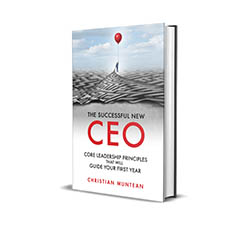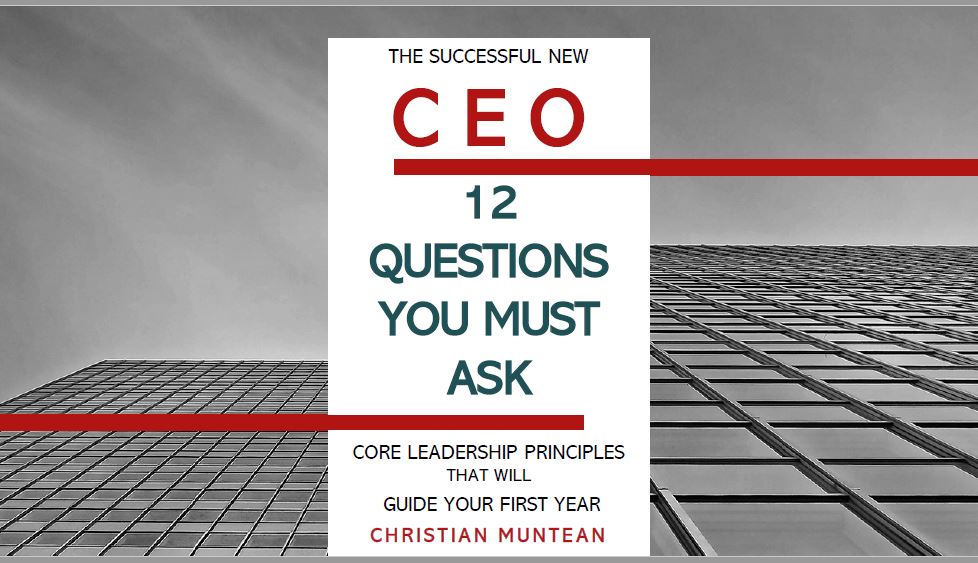What Do I Do with a Toxic Employee?

An executive was speaking with me over the phone, “I have someone on my team who is creating problems.”
“What’s he doing?” I asked.
“It’s hard to say. He’s like smoke. It’s there but it’s hard to describe.” He said.
He was describing a toxic employee. Someone who was dragging the entire team down. If you are a leader, the chances are high you have your own story.
What Is “Toxic”?
If we are talking about plants or chemicals, something is toxic if it damages the organism.
Toxicity (in nature) is situationally dependent.
The dose matters. Too much water can create water intoxication. A very small amount of arsenic can help treat certain kinds of cancer.
The organism matters. Foods that are healthy for humans (grapes, onions, avocados, etc) are toxic for dogs. On the other hand, nearly everything my dog tries to eat would probably kill me.
Toxicity may not be immediately apparent or may only occur in certain combinations.
But the real point is this: Something is toxic when its presence damages the organism.
What Is a Toxic Employee?
A toxic employee is anyone who damages the organization they work in.
Dose matters. Who they are with and the situations they are in matter. They might be broadly toxic. Or specifically toxic. For example, great with customers but toxic toward co-workers.
But ultimately what matters is this: They have a pattern of creating harm. Their presence precedes some form of problem.
Common Toxic Behaviors
The following is a list of common toxic behaviors. It’s not exhaustive. It is loosely ranked from “probably obvious” to “smoky”.
- Explosions of anger or rage
- Sexual harassment
- Vengeful
- Putting others down: Backstabbing, slander, gossip, name-calling
- Easily offended: Others walk on eggshells around them
- Carries grudges: Won’t let go of offenses. Even if others have tried to make amends
- Perpetual drama: Something (often legitimate) is always going wrong
- Doesn’t accept responsibility
- Lies or acts deceptively
- Demands attention or credit. May create drama to get it. May act to harm those who they feel received it instead of them
Why Are Toxic Employees Confusing?
They can be smoky.
Some toxic employees are obvious. They are obnoxious jerks. Flagrant bullies. Habitual backstabbers. Their toxic behavior and attitudes are obvious. No organization or leader with a modicum of health and self-respect will retain them.
But some are “smoky”. It’s hard to recognize them. That is because many:
- Present themselves well
- Can be smart and friendly
- Can be hard workers
- Can provide value – even excel – in a certain area
- Don’t intend to create harm
Some even start out as model employees.
But – they become toxic. The system they are in becomes sick. And it’s the things that they do that causes it.
They can persuade you that it’s your (or someone else’s) fault.
One common trait of toxic people – especially those of the smoky variety – is that they can be superbly effective at pinning the blame elsewhere. Someone or something else is always responsible.
Surprisingly, many leaders believe them. These leaders will even accept the blame. They might even take on an enabling role – make sure that everyone else dances the dance around this toxic individual.
Consequences of Not Addressing Toxic Behaviors
Toxic people do harm. That’s the definition. Left unchecked, they are causing harm and will continue to harm some or all of the following:
- Co-workers
- Organizational goals and performance
- Partners and vendors
- You as a leader
- Fill in the blanks
No one likes having toxic employees. But many leaders refuse to acknowledge them or tolerate them anyway. In many cases, the toxic employee looks for (usually subconsciously) a leader whom they can manipulate.
A leader who believes the problems are probably everyone or anyone other than the toxic person. Or a leader who is afraid of what the toxic person will do if confronted.
Here’s the deal: Leaders who protect or enable toxic employees hurt others. It’s a toxic combination. The leader is actually enhancing or preserving the toxicity.
Don’t be that leader.
What To Do with Toxic People
An owner called me once. “Can you provide training on bullying?”
“Why?” I asked.
She said, “We have someone on our team who is a bully. I’d like to provide training for the staff to address it.”
“The staff don’t need to be trained. You need to confront this person. Tell him to knock it off or he can’t work there.” I answered.
Don’t make it complicated. Deal with it.
- Take action: As the leader, you are responsible. Commit to creating a “non-toxic” environment.
- Directly address the person:
- Talk to the person directly and (usually) privately.
- Identify a specific behavior that needs to change. Be as specific and objective as possible.
- Describe the current impact of their behavior. Let them know how it is experienced by others or the organization.
- Specifically describe the change you want to see.
- Provide a tight timeline for change.
- Offer help (as long as the help isn’t taking responsibility off their shoulders).
- Create accountability. Expect to see immediate improvement. That improvement should be self-sustained by the individual. You shouldn’t have to constantly re-direct them.
You are most likely working with a grown-up human being. They shouldn’t need handholding. If directly confronted with a specific problem behavior, you should expect to see :
- Immediate effort to change the behavior
- Actual, sustained change in behavior
- Ownership and a sense of responsibility
- Elimination of the toxic effects
If you work in an environment where there is an HR process[1], start the process. I know these processes can be exhausting. But are they really more exhausting than dealing with the consequences of a toxic personality day in and day out? Probably not.
If you don’t have a process, start out with what I’ve written above.
This should begin immediately. Grow-ups who are willing to change don’t need 90 days to start to change. It should begin the moment they walk out your door.
Having said that – offer grace. They might not get it perfectly or consistently. Habits and lifelong behaviors may be difficult to change.
But you should see their immediate effort, with improving results and a sustained sense of personal responsibility.
Don’t put up with nonsense. Invest in people who are tangibly growing. But if they quit trying, or don’t produce change, or don’t accept responsibility, or find a new set of toxic behaviors, call it for what it is: Time to let them go.
Take good care,
Christian
[1] If your HR policies don’t allow you to address toxicity in a timely way, then those policies are toxic. Also, in many cases, it exposes the company to liability.
Are you looking for ways to improve company performance? Access my free tools to get started.

Are you interested in learning more about becoming a successful CEO? If so, get a free copy of my book The Successful New CEO. Not a new CEO? I’ve been told by “old hands” that they felt any CEO should read this. So, click here to get your copy today.
by “old hands” that they felt any CEO should read this. So, click here to get your copy today.
There are 𝟭𝟮 𝗰𝗿𝗶𝘁𝗶𝗰𝗮𝗹 𝗾𝘂𝗲𝘀𝘁𝗶𝗼𝗻𝘀 to ask before accepting a new CEO position. Do you know what they are? Instantly download my free e-book here.
𝗧𝗵𝗲 𝗕𝗲𝘀𝘁 𝗧𝗶𝗺𝗲 𝘁𝗼 𝗖𝗿𝗲𝗮𝘁𝗲 𝗔𝗻 𝗘𝗺𝗲𝗿𝗴𝗲𝗻𝗰𝘆 𝗦𝘂𝗰𝗰𝗲𝘀𝘀𝗶𝗼𝗻 𝗣𝗹𝗮𝗻 𝗶𝘀 𝘽𝙚𝙛𝙤𝙧𝙚 𝗬𝗼𝘂 𝗡𝗲𝗲𝗱 𝗜𝘁.
Be prepared for a smooth transition in the event of an unplanned emergency succession. My guide will show you step-by-step how to devise your own plan.
Let’s connect.
I’m passionate about helping leaders to create workplaces they love going to and increasing the value of the services they offer. My results-oriented approach is tailored to each client’s specific situation and needs. As a leadership coach, I have developed a wealth of resources to help you and your team grow and become stronger.
Weekly Newsletter – sign up to receive my weekly articles addressing critical leadership challenges and issues.
The Leadership Coach Podcast – In my podcast, we explore effective, high-impact, and enjoyable leadership. Subscribe.
Find the value of your company with my free assessment tool: The Value Builder System
The Value Builder System™ is a 13-minute online questionnaire that evaluates your business on the eight factors that contribute more to its attractiveness and value. These factors are scored on a scale of 1-100. Businesses that score over 80 are likely to command 70%-100% higher value than others.
Opportunities
Executive and Leadership Coaching: Do you feel overwhelmed? Are you not getting the results you expect from the effort you are putting in? Do you find yourself facing similar challenges time and time again? Would you like to change specific ways of relating or reacting? If you would like to experience predictable, measurable growth Contact me.
Profitable Exit Strategy Workshop: Are you a business owner or partner? Over 55? Starting to think about exiting your business or active management in the next 3-5 years?
- Curious about what your business might be worth?
- Would you like to discover the specific steps you need to take to increase its value and become highly attractive to a buyer?
- Are you planning on handing it over to family or employees and you want to ensure long-term success?
If so, contact me now
Article Categories
Popular articles

Download my free 10-page eBook:
How To Accomplish More Without Doing More:
Eight Proven Strategies To Change Your Life
Discover how to save eight hours during your workweek-even if you're too busy to even think about it. The resource every maxed out executive needs.

